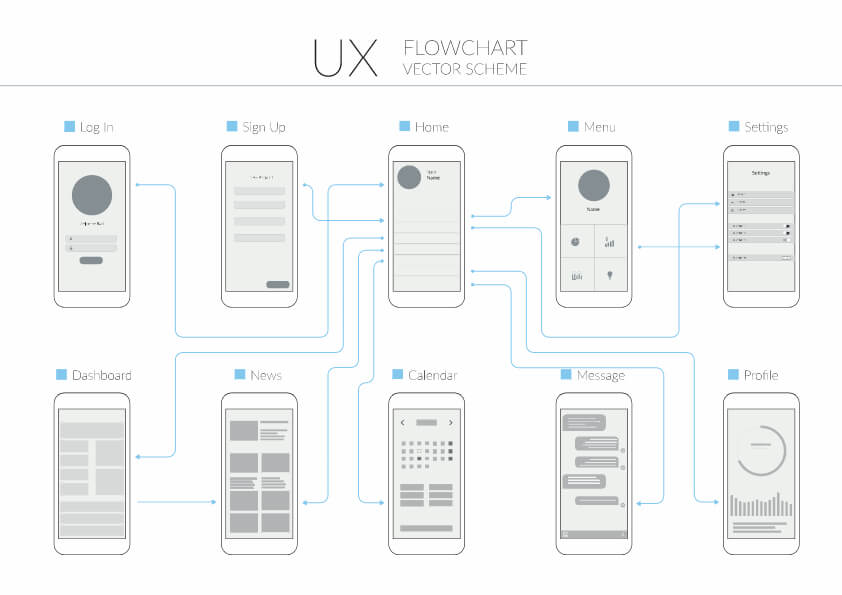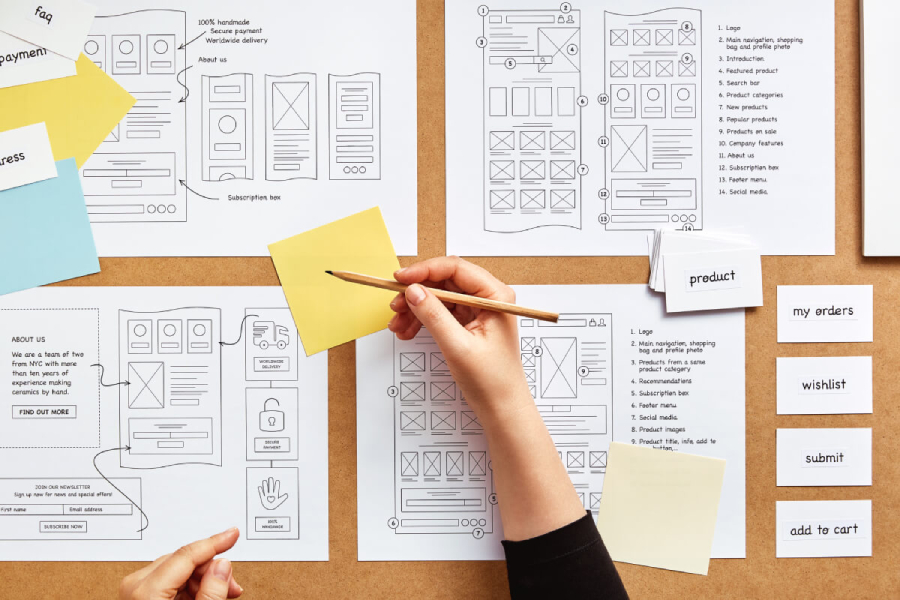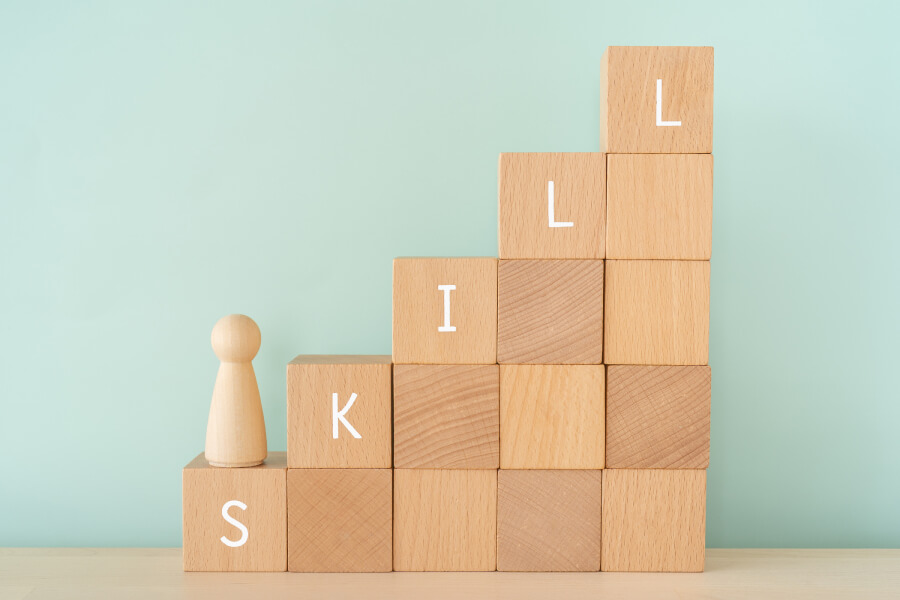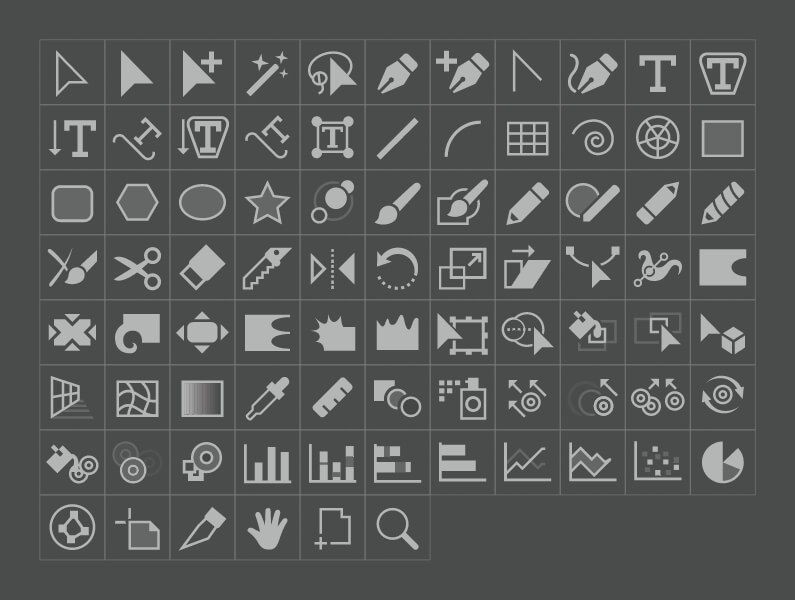
In a highly connected world, it’s not surprising that businesses want their name, products, and services to be widely accessible. Although creating a website on its own is great, a good design can go a long way in expanding the reach of a business. A website with a good design can attract and retain customers just because they feel at ease navigating your website.
We can split the design of a website into two categories: Web design and UX design. Unfortunately, most people often use both terms interchangeably and confuse the two. Hence, this article will discuss some similarities and differences between Web design and UX design.
What is Web Design?

Web design is the process of planning and creating an aesthetically pleasing website. More often than not, web designers concern themselves more with the visual aspects of the website. For example, such as how the different elements in a website complement one another and are alluring to the eyes. They also must ensure that the design is consistent with the client’s brand, including the website’s colours and typography.
What is UX Design?

User experience (UX) design is the procedure of planning and assessing how users interact with the product or service. UX designers step in the intended users’ shoes and think about the experience they would feel when interacting with the product. Most of the time, they focus on the ease and efficiency of the design for users to perform specific tasks. Then, they try to optimise these processes, so users have the best possible experience.
Web Design and UX Design Differences
1) Responsibilities

Web designers are experts who design the visible elements of websites. They are responsible for creating the website’s layout, aesthetics, usability, and functionality. Usually, they actively follow online design forums and communities to apply the latest trends to their client’s websites.
The visible elements on the website, or UI (user interface), is only one aspect web designers focus on. They also need to integrate UX to create a highly effective responsive website that users can engage from any devices. Instead of concentrating on how a user interacts with the site, a web designer might focus more on its aesthetics.
UX designers are more specialised and solely put the user’s experience first. They also manage a product’s acquisition and coordination process, including the convenience, utility, and components. It is a procedure that begins before the client ever receives the goods.
The foundation of user experience design is understanding the user’s preferences, behaviours, habits, needs, and feelings. To create an ideal and efficient solution, UX designers must thoroughly understand the problem and the customer they are working for. They do this by performing interviews and surveys with the target audience where they could create user stories, likes and dislikes so that they can design the experience around them.
2) Skills Required

A web designer must be competent in web design tools like Figma and Photoshop. Most of the time, they also require an in-depth understanding of scripting languages like JavaScript and PHP, HTML and CSS so that they can do a quick prototype of their designs. Finally, they need good communication to pass the plan and intentions to the web developer.
Web designers are skilled in
- Principles of web design
- Colour theory
- Creative conceptualization
- Icon development
- Typography
A UX designer must have fluent communication, agile and lean development, rapid prototyping, revising, crowdsourced designing, and relevant soft skills. These skills are required to deeply understand the intended customers so as to create the best possible experience for them. UX designers play a very crucial role in an organisation. They have to make sure that a customer would want to associate themselves with the brand.
UX designers are skilled in
- Understanding user psychology
- Comprehending product specifications
- Finalising the right interaction model
- Creating personas through user surveys
- Collaborate with UI designers to create attractive and useful designs
3) Tools Used

Web design focuses more on the technology and trends they use to get inspiration to create their design. However, UX design focuses more on the user and their feelings when interacting with the products or services. There are some shared tools that they use. This includes Figma and Adobe XD, which are tools used for wireframing and prototyping.
| Web Design Tools | UX Design Tools |
| Figma InVision Sketch Adobe XD |
|
| Adobe Photoshop HTML & CSS JavaScript |
Balsamiq Axure WebFlow |
The table above is not an exhaustive list, nor are they the tools all web designers or all UX designers use. Some may use other software or use the tools of the other depending on their project and familiarity.
Collaborating on a Project
When working in a team of web designers and UX designers, they need to communicate well to share their thoughts and ideas so that the project is successful. Since web designers are responsible for the website’s final presentation which impacts the user experience (UX), the two roles should work closely to ensure their intentions are aligned. They must aim to fulfil the user’s needs and address key pain points in the user journey. To prevent conflicts, they need to create guidelines to standardise some of the design aspects of the website.
1) Business Branding
The way the designers brand the company on the website is the most crucial detail to get right. In addition to being what sticks with customers, branding is important since it informs them of what to expect from the business. As a result, the website needs to accurately convey the identity of the business and the image they want to project to the public. The company logo, colour scheme, and typography can all be examples of this. The web designer will make the majority of these decisions with the UX designer because these items are primarily visual.
2) Common Elements
Most websites have recurring elements scattered over the site for consistency. Links, cards, and buttons are some of these components. Web designers and UX designers must agree on the appearance of such elements and the various situations they can be in. For example, buttons may seem differently when hovered over, disabled, or visited. It is essential to define the width and height of these elements for the various screen sizes in order for them to display properly on various devices.
3) Site Behaviours
The designers also need to standardise how certain elements like sliders and forms behave when a user interacts with them. For instance, the type of animation when a user clicks on a dropdown menu. Additionally, they must consider how to redirect how users after completing an action. The UX designer makes the majority of these choices. However, the site designer must be aware of them so that they can design the elements accordingly.
4) Handover
After the web designers and the UX designers have completed creating the mockup of the website, they will hand over the design to the web developers. Their work is not yet done, though. To ensure that the final website looks and functions exactly as the designers anticipated, they must continue communicating with the web developers during the website’s development.
Conclusion
The main difference between web design and UX design is their focus. A web designer focuses more on the appearance and look of the site, while a UX designer is more specialised and focuses more on the user experience of the product or service. But ultimately, both the web and the UX design contribute to a great website that would attract and retain users and are needed for a successful business.
Combining both web design and ux design principles, eFusion Technology has been creating beautiful websites for over 18 years. Contact us today to get started on your project!

